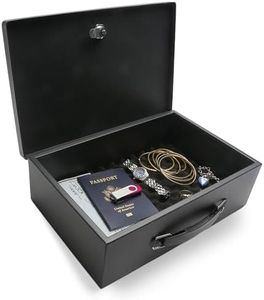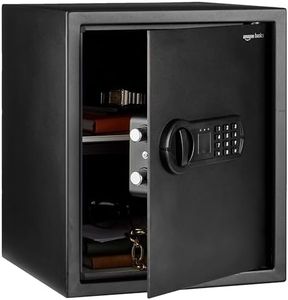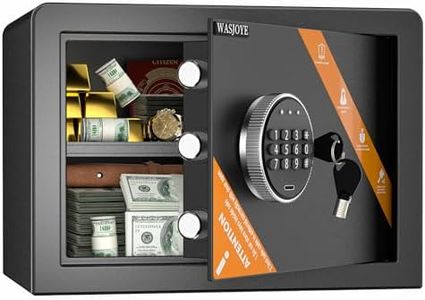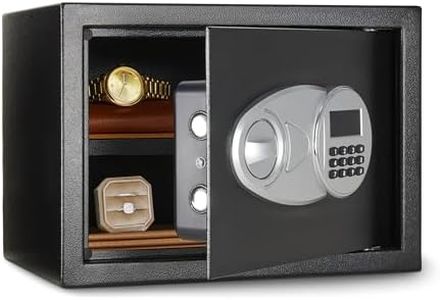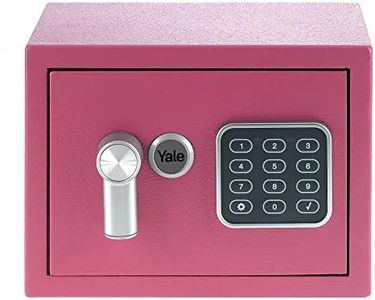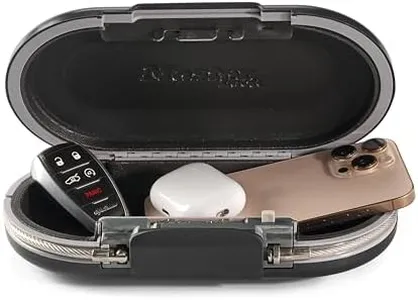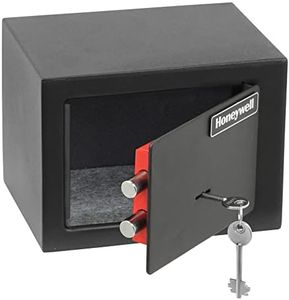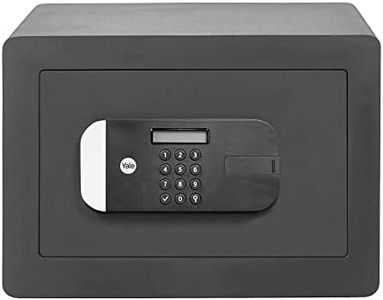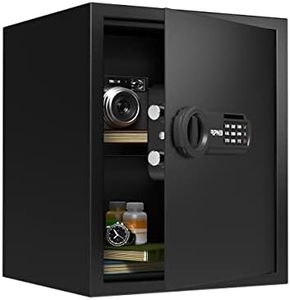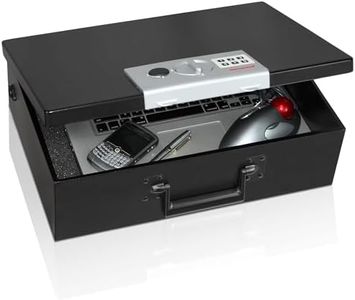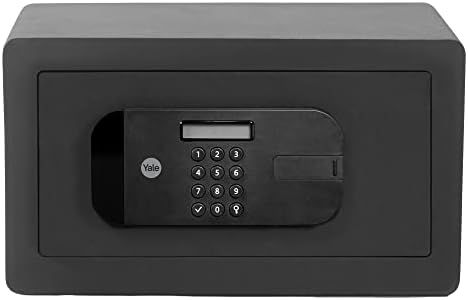We Use CookiesWe use cookies to enhance the security, performance,
functionality and for analytical and promotional activities. By continuing to browse this site you
are agreeing to our privacy policy
10 Best Small Home Safes
From leading brands and best sellers available on the web.Buying Guide for the Best Small Home Safes
Choosing a small home safe is a smart way to keep your valuables, important documents, cash, or digital devices secure within your home. The buying process can feel overwhelming due to the various types, sizes, and features available. The first step is figuring out what you'll be storing and where you plan to keep your safe. This will help you prioritize the most important features for your needs. When comparing small home safes, key specifications like size, locking mechanism, fire and water resistance, ease of installation, and construction materials all play crucial roles in finding the best fit for you.Size and CapacitySize and capacity refer to how much space is available inside the safe for your items. It's important because you want a safe that's big enough for your needs but not so large that it becomes difficult to hide or install. Sizes typically range from a few liters for very compact models, suitable for passports and jewelry, up to about 20 liters for larger small safes that can hold several documents and valuables. Consider not just your current needs but also possible future items you'd want to secure. Choosing a capacity that fits your intended contents with a little extra space is often ideal.
Locking MechanismThis is the way you access and secure your safe. Options include traditional key locks, combination dials, digital keypads, and sometimes even biometric (fingerprint) scanners. Key locks are simple but require careful key management. Combination and digital padlocks offer more convenience but require remembering a code, while biometrics provide quick access but may cost more. Your choice should be based on how frequently you'll use the safe and how comfortable you are with managing keys or codes.
Fire and Water ResistanceMany small safes offer protection against fire and sometimes water damage. Fire resistance is rated by how long the safe can withstand high temperatures before the inside becomes unsafe, usually measured in minutes (for example, 30 or 60 minutes). Water protection is evaluated by how well the safe can keep contents dry if submerged or sprayed. Assess what you'll store: if documents or digital media are important to you, prioritize a safe offering a good level of fire and water resistance. If your area is at risk of floods or fires, these features are especially valuable.
Mounting and InstallationHow a safe is installed or mounted affects how secure and convenient it is. Some small safes are portable, while others can be bolted to floors, walls, or furniture to prevent them from being carried away. If theft is a concern, look for mounting options and verify that your chosen location can accommodate installation. If you need something portable for temporary use, a lightweight design may suit you better, while permanent mounting adds a layer of security.
Construction Material and Build QualityThe materials used and how the safe is built impact its ability to resist tampering, drilling, or forced entry. Steel is the most common material. Thicker steel or double-walled construction typically provides better protection, but might also add weight. Check for solid hinges and secure bolts. If your priority is safeguarding against theft, focus on models known for tougher build quality, rather than just basic storage protection.
